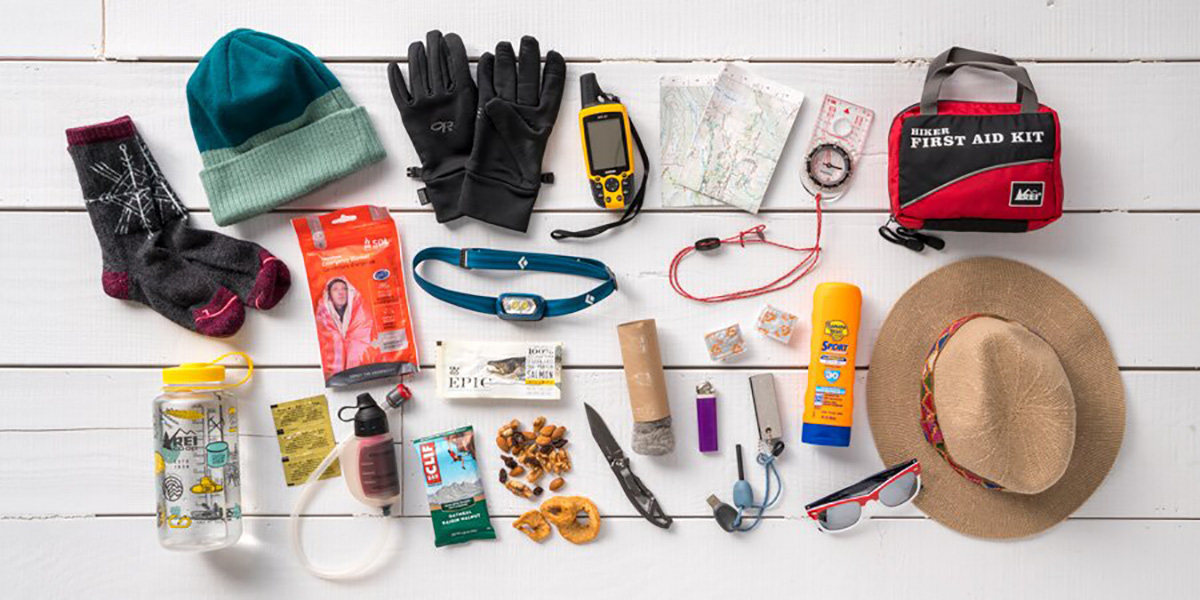The 10 Essentials are a collection of first aid and emergency items that can help you in the event of minor injuries, sudden weather changes, or unexpected delays. The 10 Essentials are only the basic items you should have with you. You may need additional items depending on the activity in which you participate.
The Ten Essentials first appeared in print in the third edition of "Mountaineering: The Freedom of the Hills" (January 1974). Many regional organizations and authors recommend that hikers, backpackers, and climbers rigorously ensure they have the ten essentials with them. However, personal preferences and differences in conditions may dictate otherwise and with experience most adventurers add and subtract from the list depending on the situation. Some ultralight backpackers do not always carry all of the items and believe it is an acceptable risk they take in order to travel light and fast.
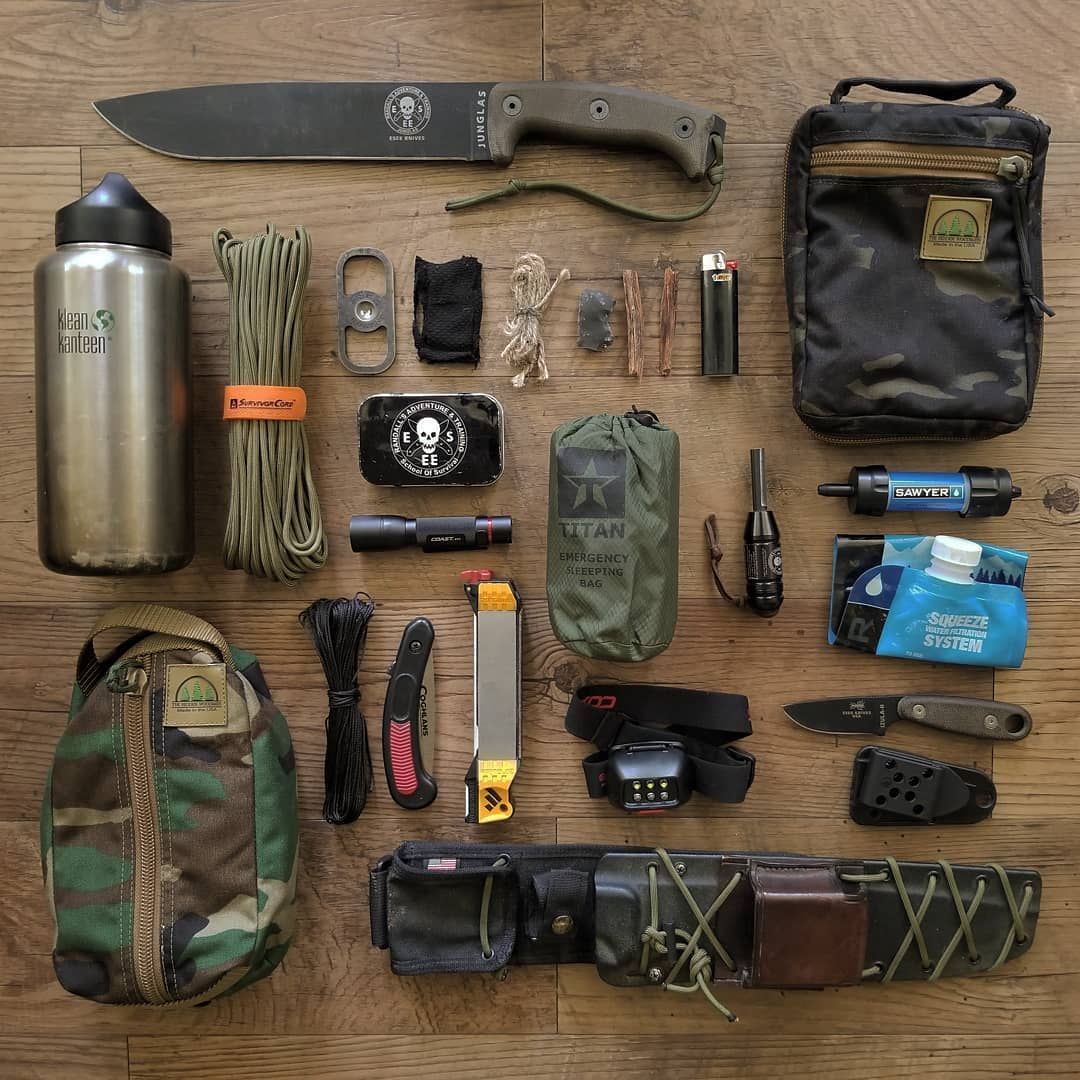
Packing the “Ten Essentials” whenever you step into the backcountry, even on day hikes, is a good habit. True, on a routine trip you may use only a few of them or none at all. It’s when something goes awry that you’ll truly appreciate the value of carrying these items that could be essential to your survival.
The original Ten Essentials list was assembled in the 1930s by The Mountaineers, a Seattle-based organization for climbers and outdoor adventurers, to help people be prepared for emergency situations in the outdoors. Back then, the list included a map, compass, sunglasses and sunscreen, extra clothing, headlamp/flashlight, first-aid supplies, fire starter, matches, knife and extra food.
Over the years, the list has evolved to a “systems” approach rather than including individual items. Here’s what it looks like today:
Updated Ten Essential Systems
- Navigation: map, compass, altimeter, GPS device, personal locator beacon (PLB) or satellite messenger
- Headlamp: plus extra batteries
- Sun protection: sunglasses, sun-protective clothes and sunscreen
- First aid: including foot care and insect repellent (as needed)
- Knife: plus a gear repair kit
- Fire: matches, lighter, tinder and/or stove
- Shelter: carried at all times (can be a light emergency bivy)
- Extra food: Beyond the minimum expectation
- Extra water: Beyond the minimum expectation
- Extra clothes: Beyond the minimum expectation
The exact items from each system that you take can be tailored to the trip you’re taking. For example, on a short day hike that’s easy to navigate you might choose to take a map, compass and PLB, but leave your GPS and altimeter behind. On a longer, more complex outing, you might decide you want all those tools to help you find your way. When deciding what to bring, consider factors like weather, difficulty, duration, and distance from help.
Continue reading below for more information about each of the Ten Essential systems.
1. Navigation
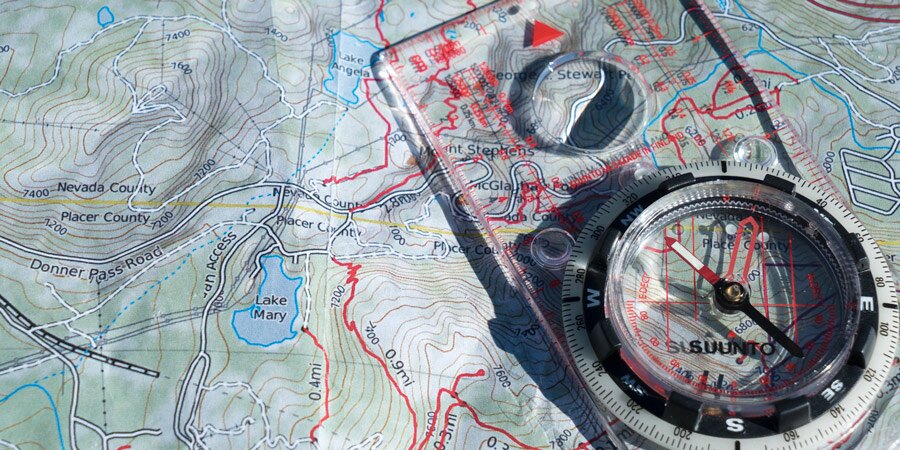
Contemporary navigation tools include five essentials for traveling in the backcountry: a map, compass, altimeter watch, GPS device and personal locator beacon (PLB). Here’s more detail:
- Map: A topographic map should accompany you on any trip that involves anything more than a short, impossible-to-miss footpath or frequently visited nature trail. Learn how to read a topo map.
- Compass: A compass, combined with map-reading knowledge, is a vital tool if you become disoriented in the backcountry. Many smartphones, GPS devices and watches include electronic compasses, but it’s wise to also carry a standard baseplate compass because it weighs next to nothing and does not rely on batteries, making it an indispensable backup.
Note: A compass equipped with a sighting mirror can also be used to flash sunlight to a helicopter or rescuer during an emergency.
- GPS device: A GPS device allows you to accurately find your location on a digital map. Those designed specifically for outdoor travel are often built rugged and weatherproof. Another popular option is to use a smartphone with a GPS app, but consider that most phones are more fragile so you’ll likely need to protect it with a case. Whichever you choose, keep in mind that these gadgets run on batteries, so you’ll need to monitor your battery power and possibly carry extra batteries.
- Altimeter watch: This is a worthwhile navigational extra to consider bringing along. It uses a barometric sensor to measure air pressure and/or GPS data to provide a close estimate of your elevation. This info helps you track your progress and determine your location on a map.
- Personal locator beacon (PLB) or satellite messenger: These gadgets can be used to alert emergency personnel if you need help in the backcountry. When activated in an emergency, they will determine your position using GPS and send a message via government or commercial satellites. A PLB or satellite messenger can be a nice backup to have in case something goes awry, and they will work in remote locations where a cell phone cannot be counted on to have a signal.
2. Headlamp
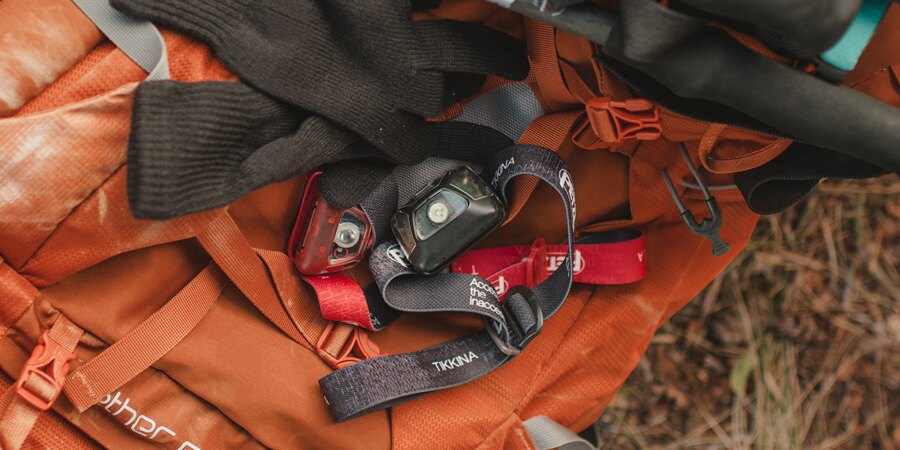
Being able to find your way through the wilderness at night is essential, so you always need to have a light source with you. A headlamp is the preferred choice of most backcountry travelers because it keeps your hands free for all types of tasks, whether that’s cooking dinner or holding trekking poles. Always carry extra batteries.
3. Sun Protection
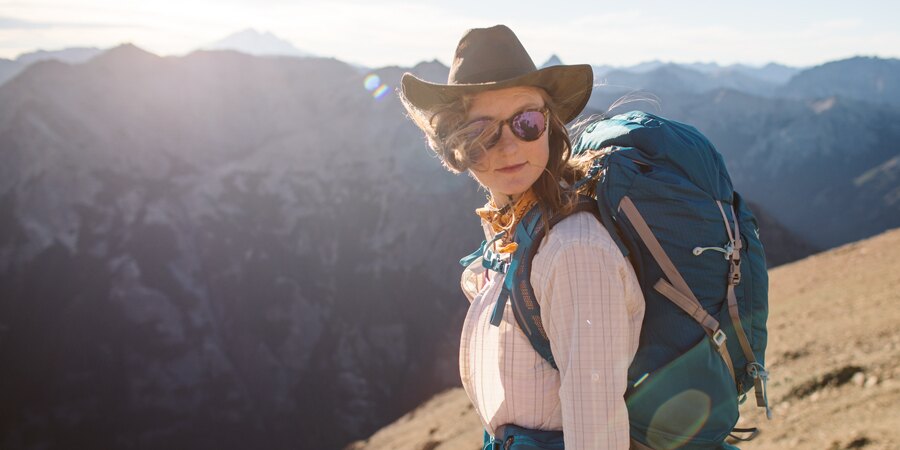
Always pack with you and wear sunglasses, sun-protection clothing and sunscreen. Not doing so can result in sunburn and/or snow blindness in the short term and potentially premature skin aging, skin cancer and cataracts in the long term.
- Sunglasses: Quality sunglasses are indispensable in the outdoors to protect your eyes from potentially damaging radiation. If you’re planning prolonged travel on snow or ice, you’ll need extra-dark glacier glasses. All sunglasses sold at REI block 100 percent of ultraviolet light (UVA and UVB)—a key function of quality lenses. UVB rays, the rays that can burn your skin, have been linked to the development of cataracts. Groups should carry at least one pair of spare sunglasses in case someone loses theirs or forgets to bring them.
- Sunscreen: Spending long hours outdoors can expose you to ultraviolet rays, the cause of sunburn, premature skin aging and skin cancer. Wearing sunscreen is recommended to help limit your exposure to UV. When selecting a sunscreen, health experts advise choosing:
-
A formula that offers a sun protection factor (SPF) of at least 15, though SPF 30 is recommended for extended outdoor activity.
- A formula that blocks both UVA and UVB rays.
-
Apply the sunscreen generously and thoroughly to all exposed skin. UV rays can reflect off of snow and water so don’t forget to get spots like the underside of your chin and nose. Depending on many factors (time of day, sweat and more), you should reapply as often as every two hours. And don’t overlook SPF-rated lip balm.
- Sun-protection clothing: Clothing can be an effective way of blocking UV rays from reaching your skin without having to slather on sunscreen (you’ll still need sunscreen for any exposed skin, like your face, neck and hands). Many lightweight, synthetic pieces of clothing come with an ultraviolet protection factor (UPF) rating to indicate how effective the pieces are against UVA and UVB light. A hat, preferably one with a full brim, is a key accessory for sun protection.
4. First Aid
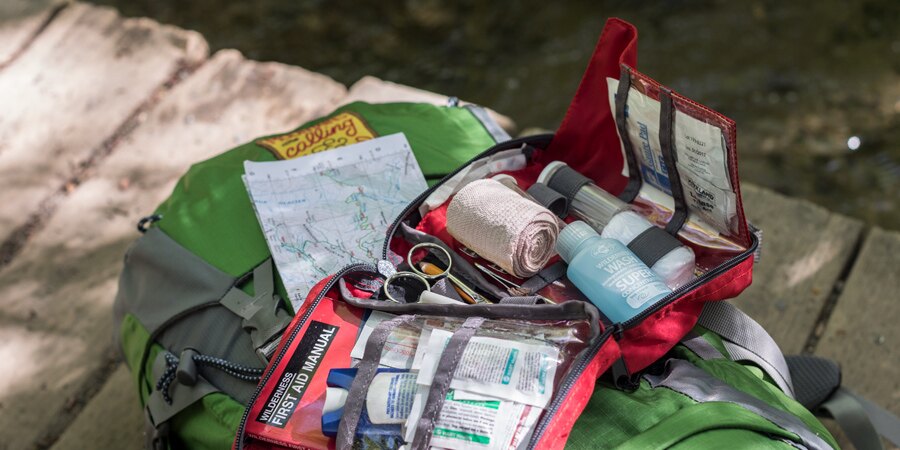
It’s vital to carry and know how to use the items in a first-aid kit. Pre-assembled first-aid kits take the guesswork out of building your own, though many people personalize these kits to suit individual needs. Any kit should include treatments for blisters, adhesive bandages of various sizes, several gauze pads, adhesive tape, disinfecting ointment, over-the-counter pain medication, pen and paper. Nitrile gloves should also be included.
The length of your trip and the number of people involved will impact the contents of your kit. It's also a good idea to carry some sort of compact guide to dealing with medical emergencies.
5. Knife
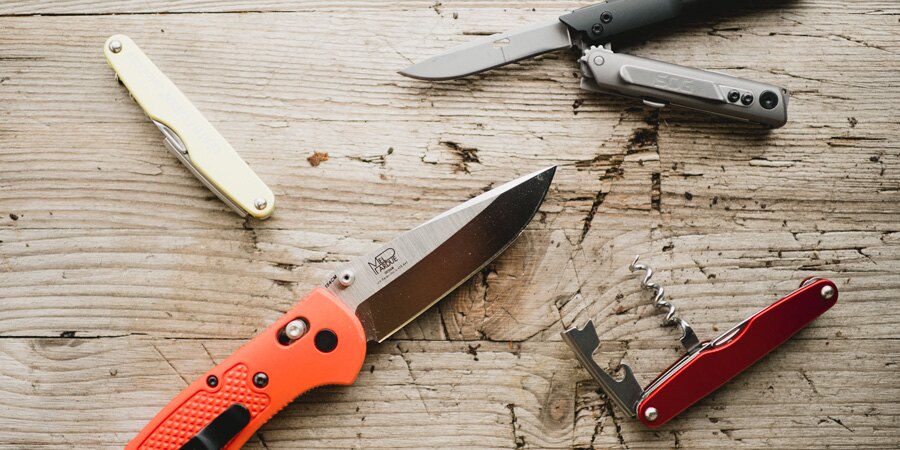
Knives are handy for gear repair, food preparation, first aid, making kindling or other emergency needs, making them an essential for every outing. Every adult in your group should carry a knife.
A basic knife may have only a single foldout blade; more elaborate knives and multitools include things like one or two flathead screwdrivers, a can opener and/or a pair of foldout scissors. The more complex your needs (if, for example, you are leading an inexperienced group), the more options you may want in your knife or tool.
In addition to a knife, a small gear repair kit can get you out of a bind in the backcountry (and the more remote you are, the more important your kit becomes). Common items include duct tape, cordage, fabric repair tape, zip ties, safety pins and repair parts for a water filter, tent poles, stove, sleeping pad, crampons, snowshoes and skis.
6. Fire
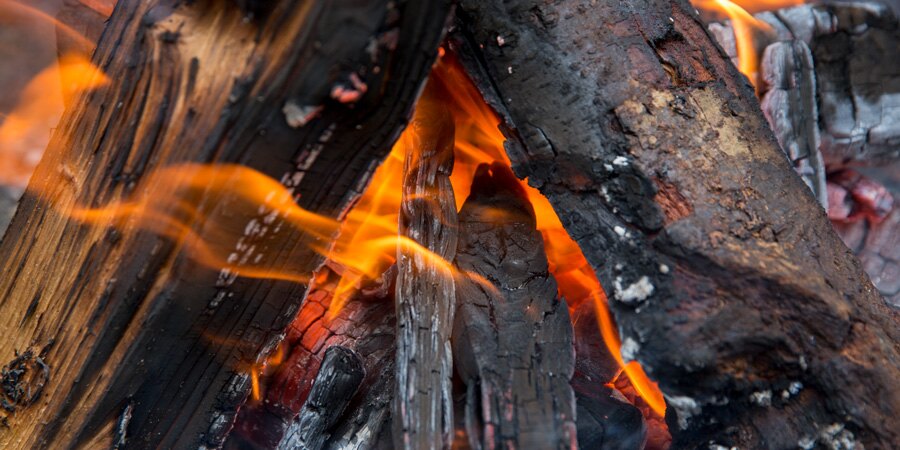
In case of an emergency, you need to have reliable supplies with you for starting and maintaining a fire. For many people, this is a disposable butane lighter, but matches are also suitable so long as they are waterproof or stored in a waterproof container. Convenience-store matchbooks are often too flimsy and poorly constructed to be trusted for wilderness use.
Firestarter, as the name implies, is an element that helps you jump-start a fire and is indispensable in wet conditions. The ideal firestarter ignites quickly and sustains heat for more than a few seconds. Options include dry tinder tucked away in a plastic bag, candles, priming paste, heat “nuggets” (chipped-wood clusters soaked in resin) and even lint trappings from a household clothes dryer.
For outings where firewood is not available, such as trips above tree line and/or on snow, a stove is recommended as an emergency heat and water source.
7. Emergency Shelter
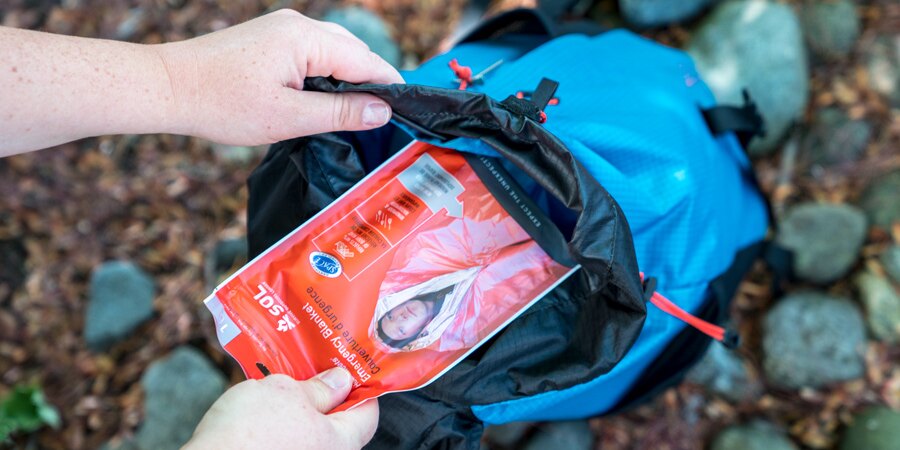
Always carry some type of emergency shelter to protect you from wind and rain in case you get stranded or injured on the trail. Options include an ultralight tarp, a bivy sack, an emergency space blanket (which packs small and weighs just ounces) or even a large plastic trash bag. It’s important to understand that your tent is only your emergency shelter if you have it with you at all times (a tent left behind at your camp is not sufficient).
8. Extra Food

Always pack at least an extra day’s worth of food in case something causes your trip to go long (such as an injury or bad weather). It’s a good idea to pack items that don’t require cooking and that have a long shelf life. Things like extra energy bars, nuts, dried fruits or jerky are good.
If you’re going on a long multiday trek or a winter adventure, consider bringing along more than a one-day supply.
9. Extra Water
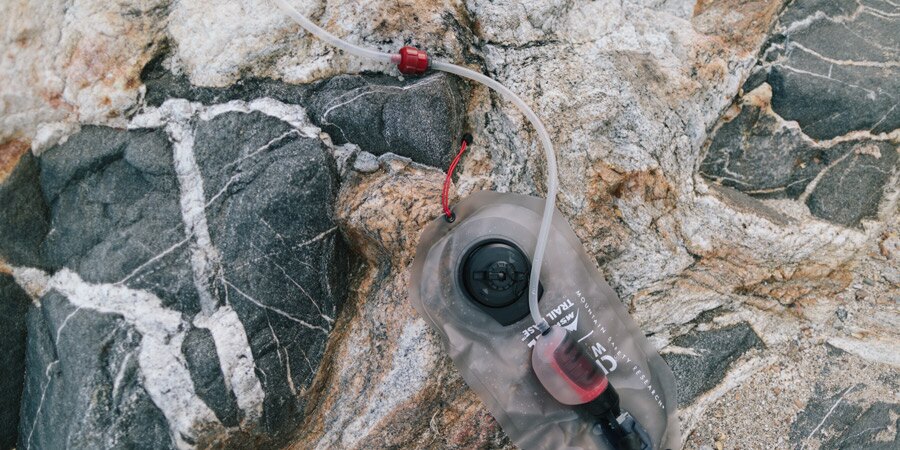
It’s crucial to carry enough water for your outing and have some method of treating water while you’re out there, whether that’s with a filter/purifier, chemical treatment or a stove for melting snow. When determining how much water to carry exactly, consider that most people need about a half liter per hour during moderate activity in moderate temperatures. You may need to carry more than that depending on factors like the outside temperature, altitude, level of exertion or an emergency.
As a starting point, always carry at least one water bottle or a collapsible water reservoir. When beginning a hike, fill up your bottle or reservoir from a potable water source.
10. Extra Clothes
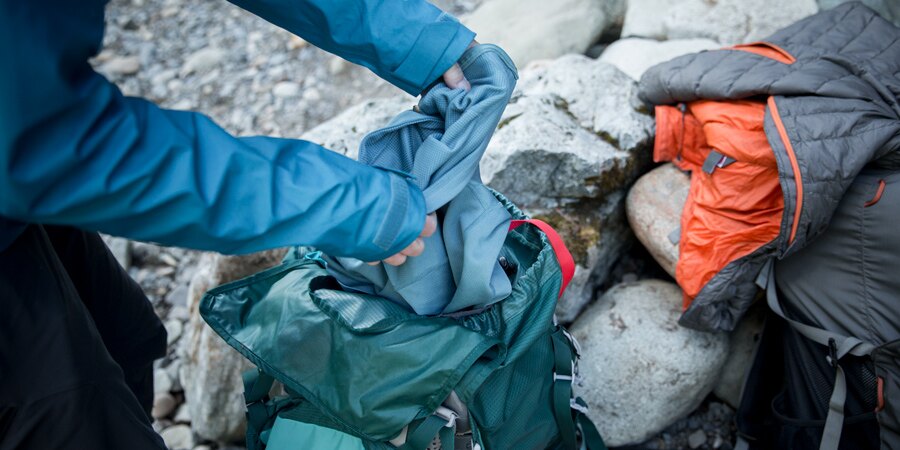
Conditions can abruptly turn wet, windy or chilly in the backcountry or an injury can result in an unplanned night out, so it’s necessary to carry extra clothes beyond those required for your trip.
When deciding what to bring, think about what you would need to survive a long, inactive period out in the elements. Common options include a layer of underwear (tops and bottoms), an insulating hat or balaclava, extra socks, extra gloves and a synthetic jacket or vest. For winter outings, bring insulation for your upper body and legs.
